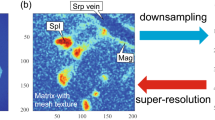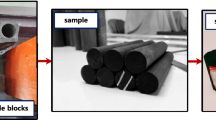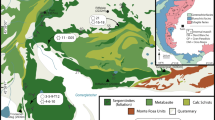Abstract
VERNON, in 18291, first described scarbroite as a soft white aluminous substance filling veins in a sandstone occurring on the Scarborough coast, but did not give properties sufficiently distinctive to identify the mineral with certainty. Since then, few reports on it have been published, although the American Petroleum Institute Research Project No. 49 on clay minerals2 lists the substance, and surmises that it consists of a mixture of clays. We have examined similar material from the same locality and environment, and conclude that it is identical with Vernon's scarbroite, but a preliminary X-ray study provides evidence that it exists as a mineral in its own right.
This is a preview of subscription content, access via your institution
Access options
Subscribe to this journal
Receive 51 print issues and online access
$199.00 per year
only $3.90 per issue
Buy this article
- Purchase on SpringerLink
- Instant access to full article PDF
Prices may be subject to local taxes which are calculated during checkout
Similar content being viewed by others
References
Vernon, W. V., Phil. Mag., 5, 178 (1829).
American Petroleum Insititute Research Project 49. Reference Clay Minerals (Columbia University, New York, 1951).
Author information
Authors and Affiliations
Rights and permissions
About this article
Cite this article
DUFFIN, W., GOODYEAR, J. X-Ray Study of Scarbroite. Nature 180, 977 (1957). https://doi.org/10.1038/180977a0
Issue date:
DOI: https://doi.org/10.1038/180977a0



